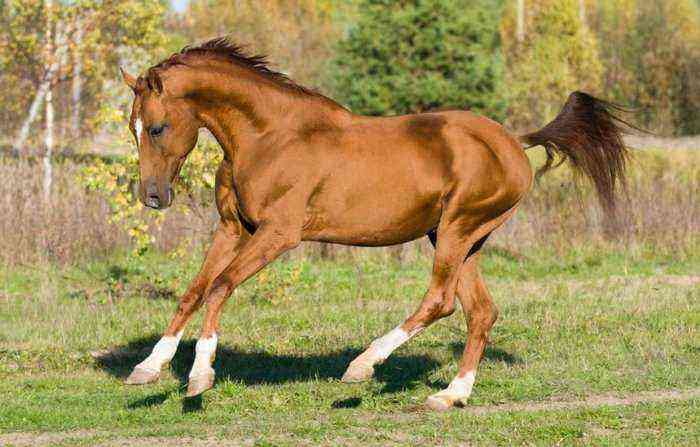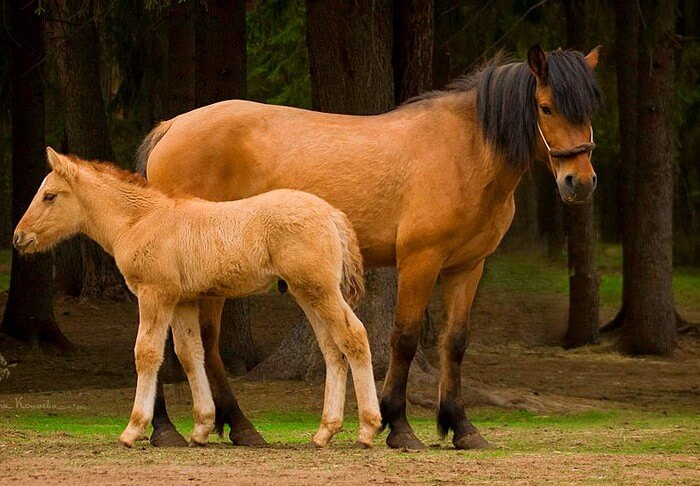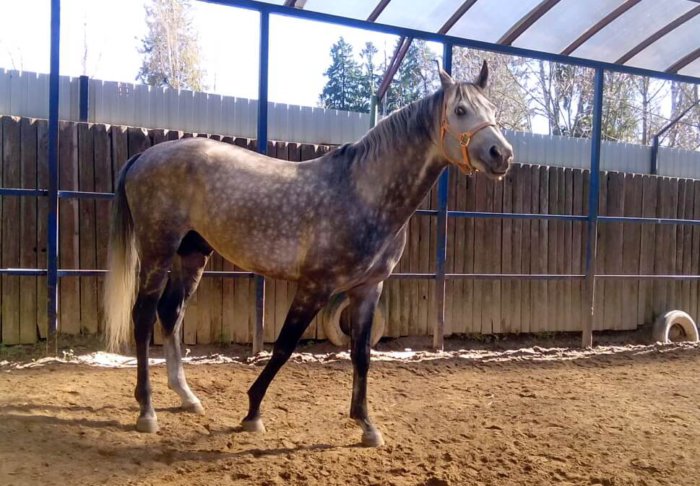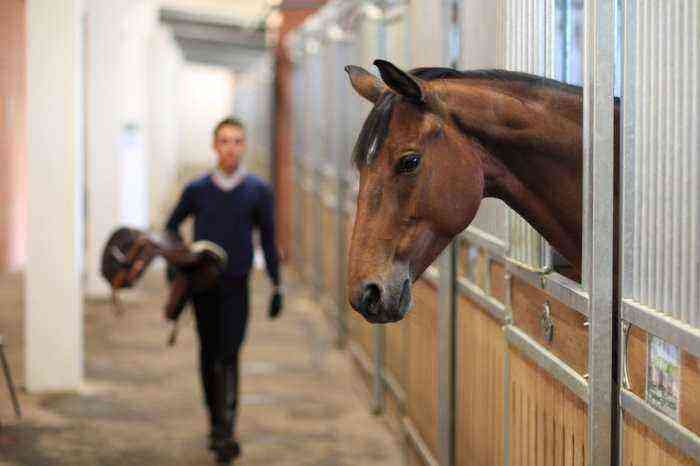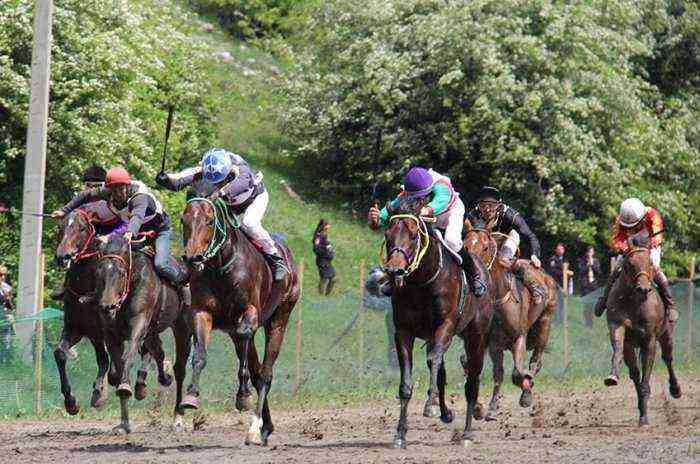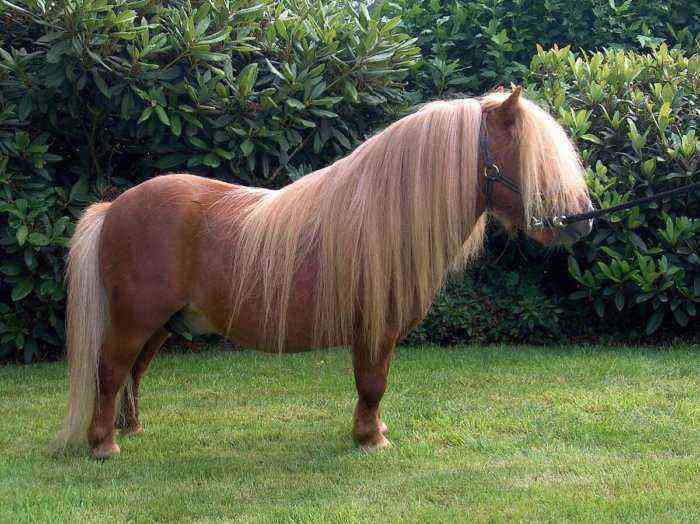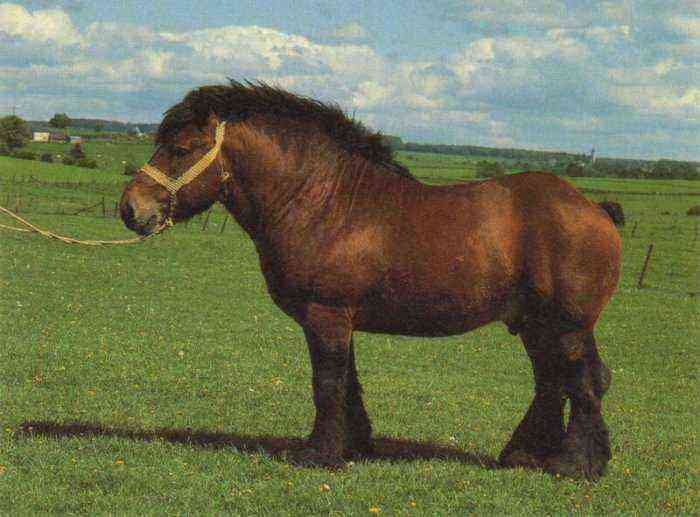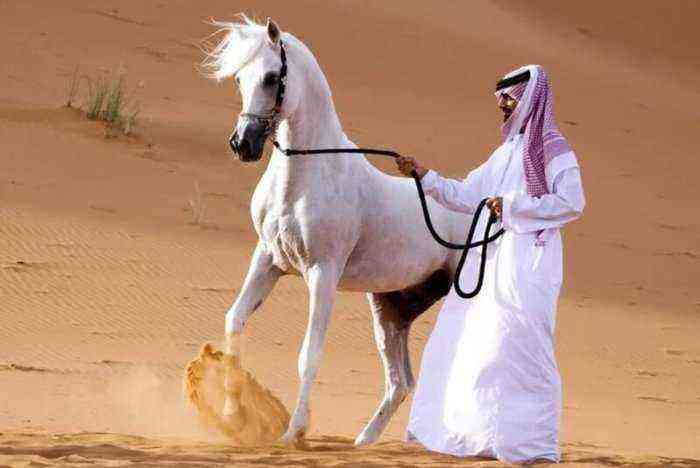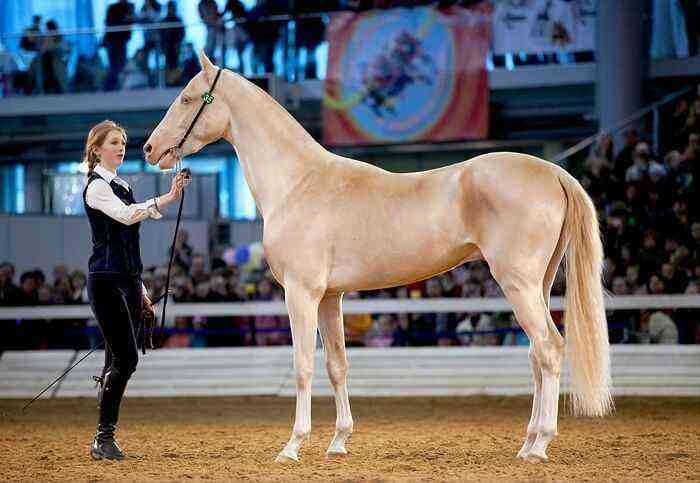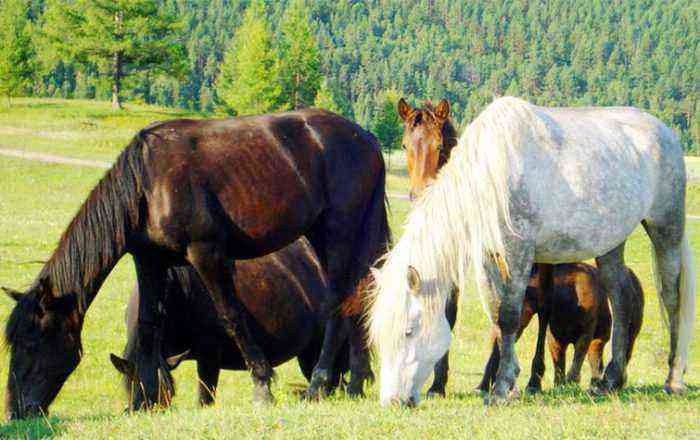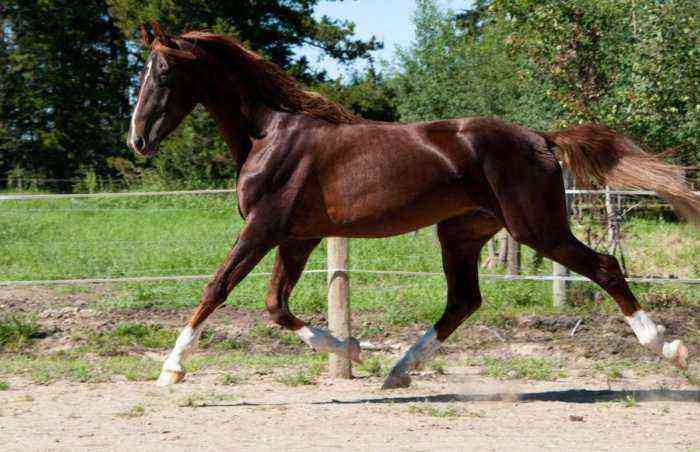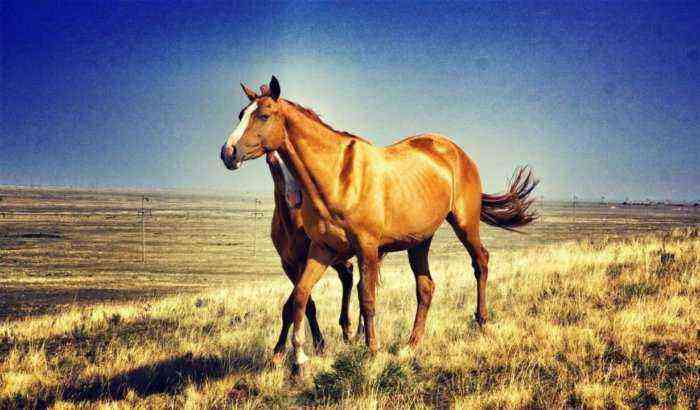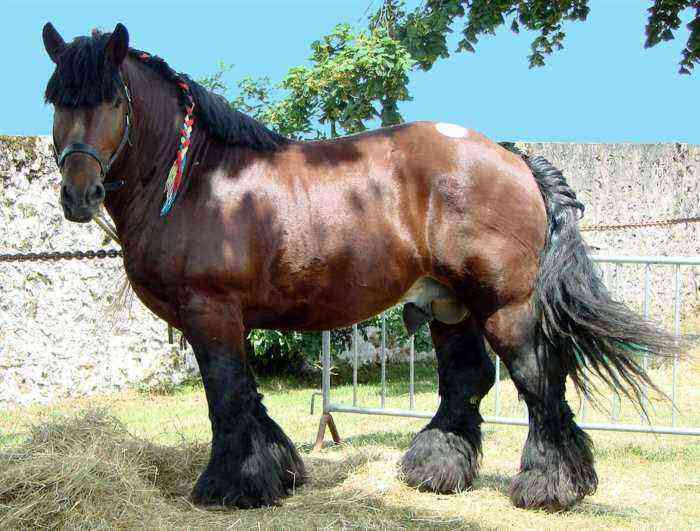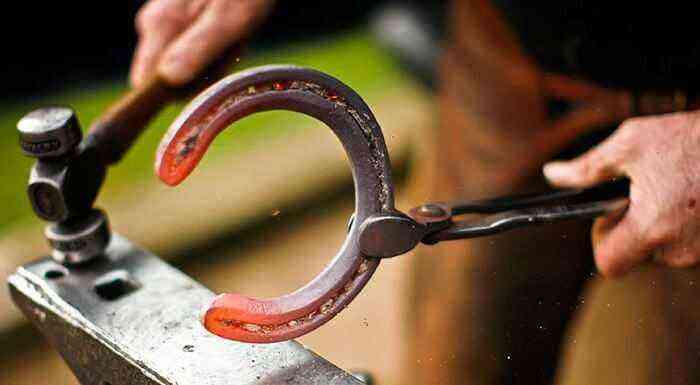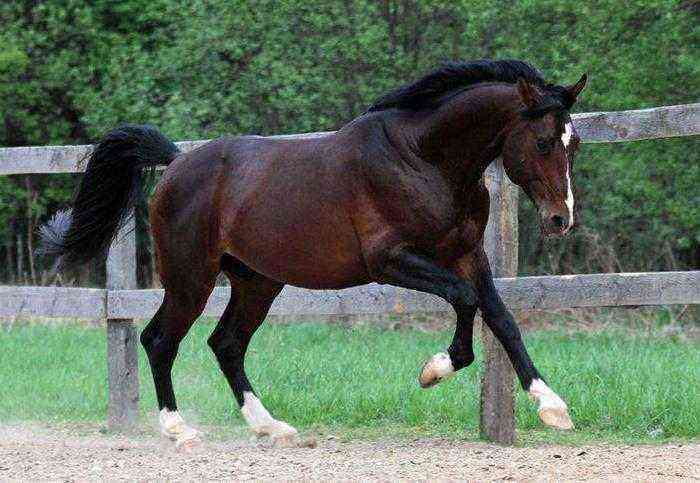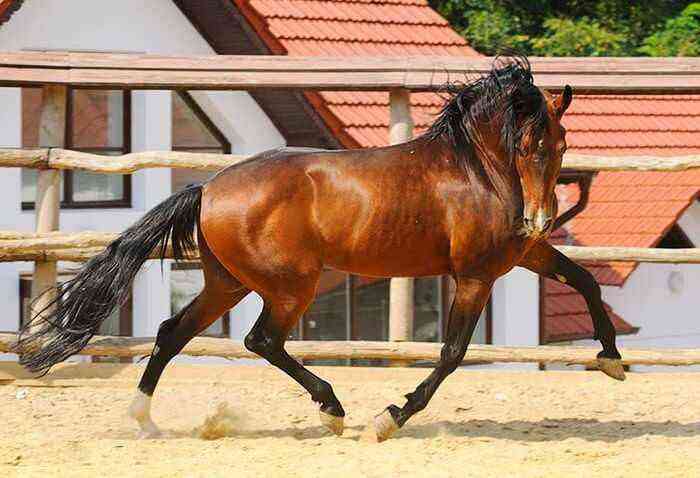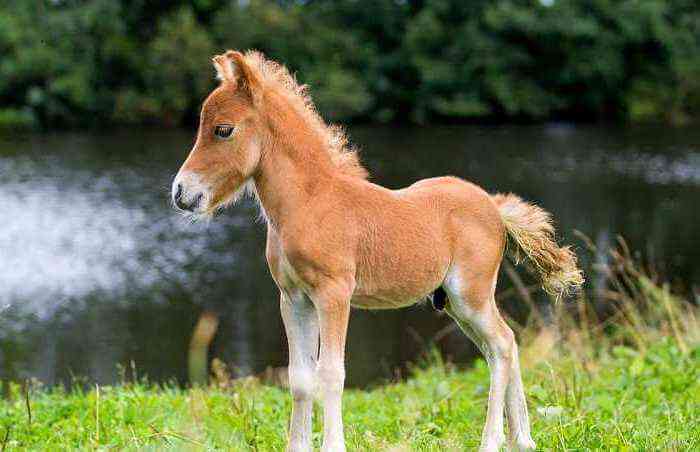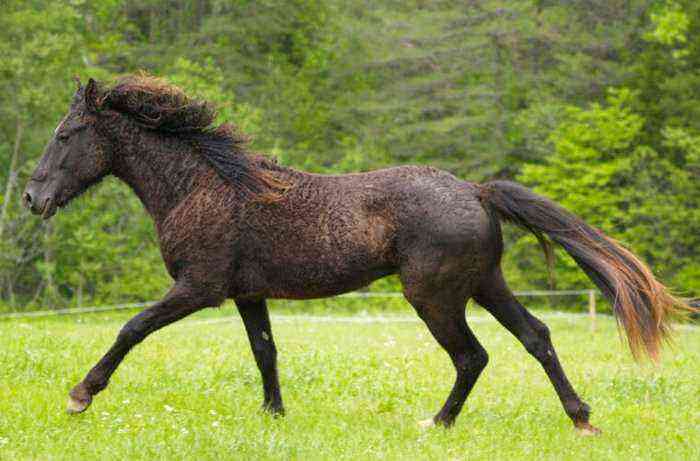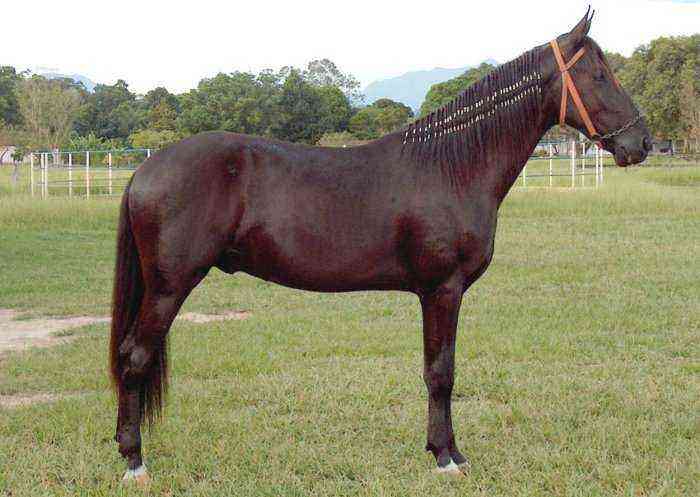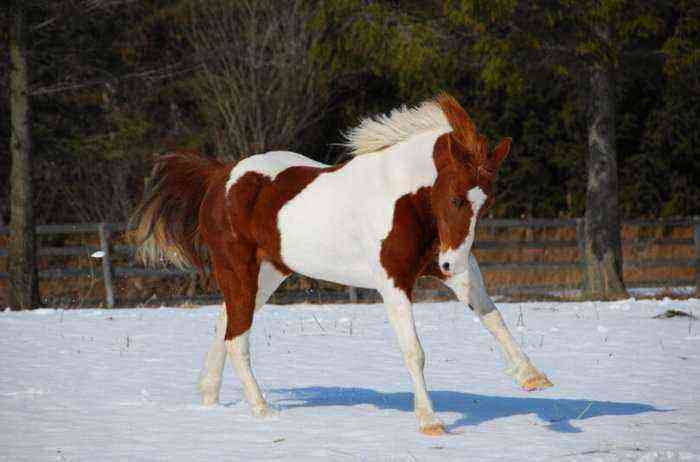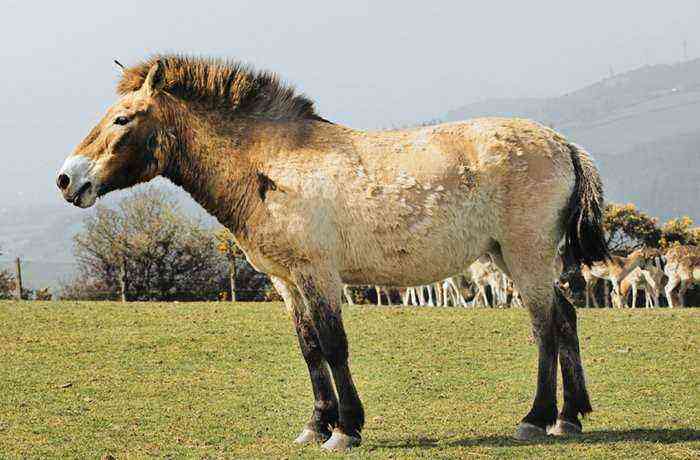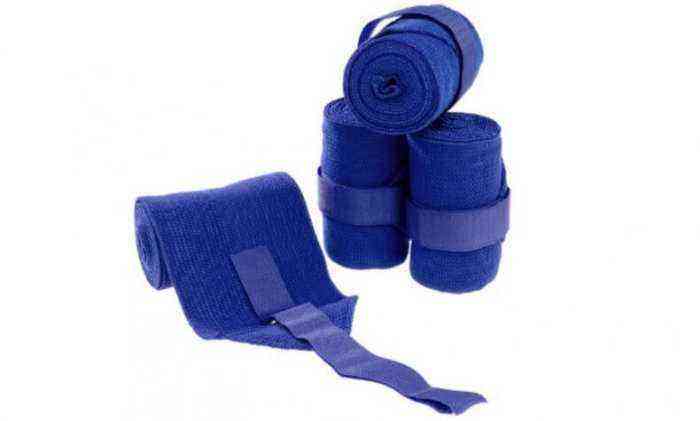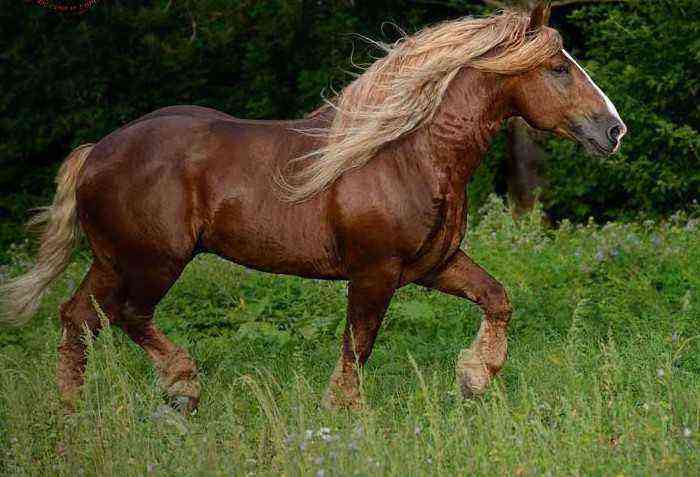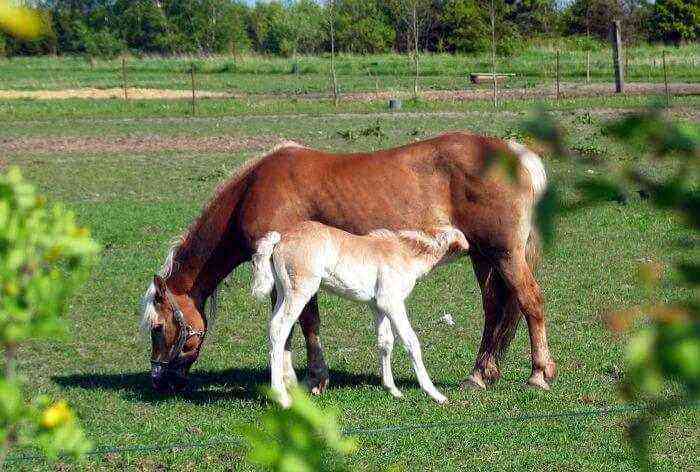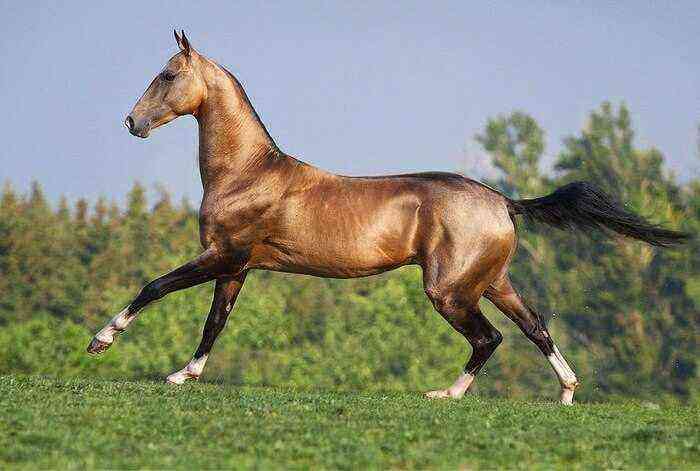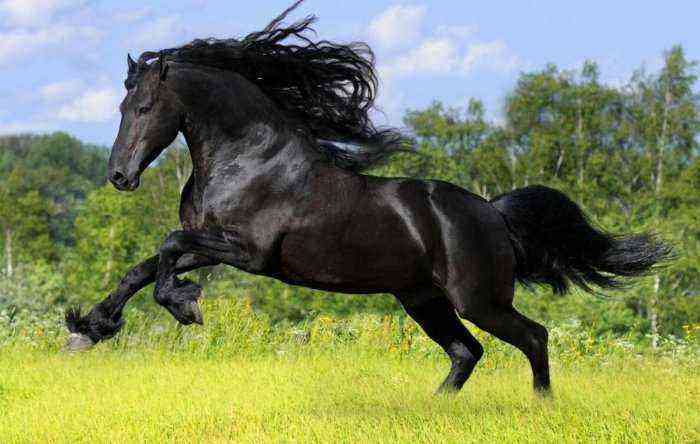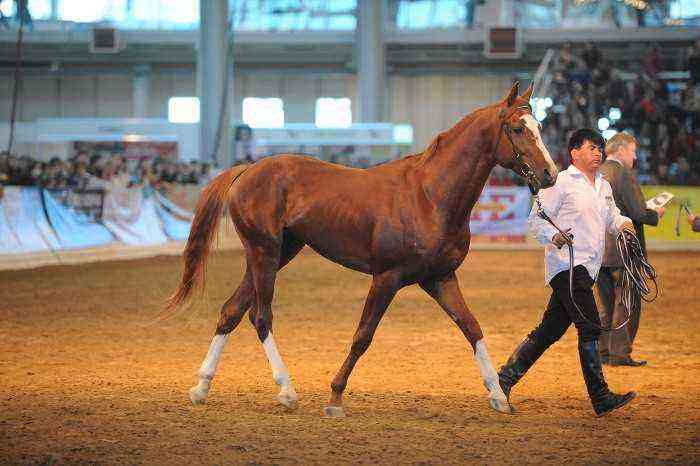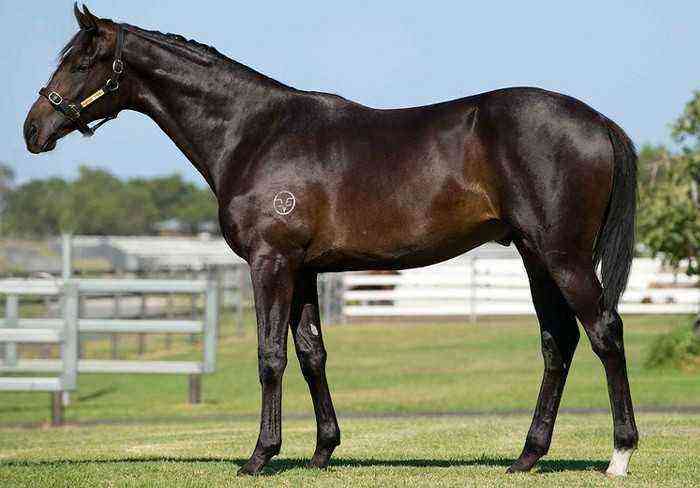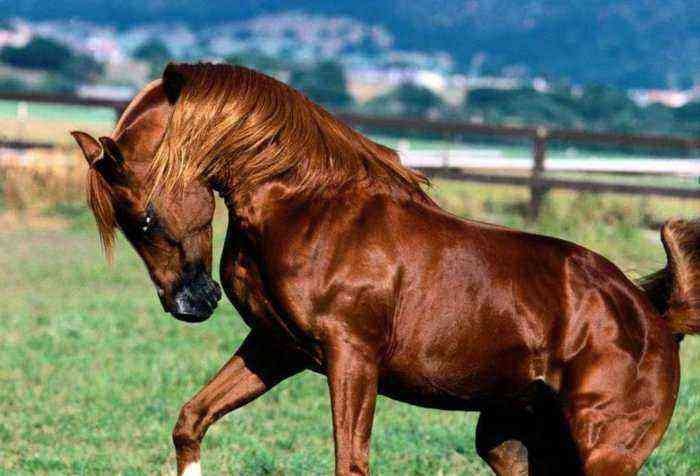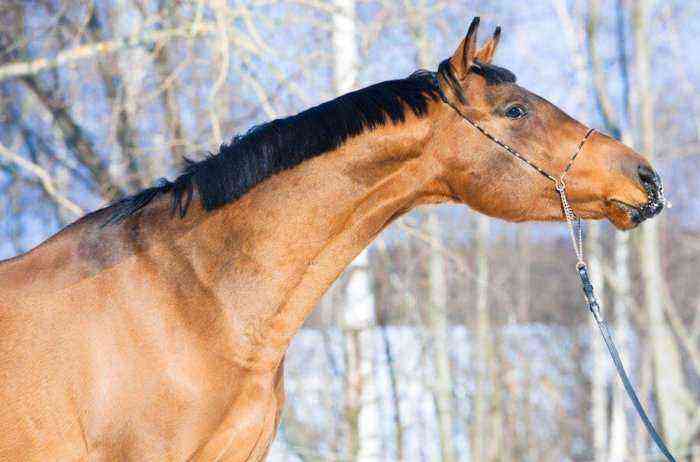More than one thousand years have passed since the domestication of the first horse by man. All this time, such animals were an integral part of everyday life, they were used to cultivate fields, transport goods, and in military campaigns. Moreover, people quickly realized that stallions differ among themselves in a number of ways that are more suitable for a particular occupation. As a result, these qualities began to be purposefully cultivated, as a result of which the breed lines known to us were formed. Today there are several hundred of them, among which there are about 30 Russian horse breeds. The most popular of them will be discussed in the article.
Russian breed horse
Budennovskaya
The widely known Budyonnovsky horse appeared as a result of crossing representatives of the Don breed and English horses. The main breeding process in this direction began in 1920. Its initiator was S. Budyonny himself, after whom the breed was named.
Initially, the marshal planned to bring out an animal that effectively shows itself both in riding and in draft riding. The selection process lasted more than 20 years and ended only in 1948, when the breed was officially registered. But since neither riding nor harness riding was practiced by that time, the breed began to be used exclusively in sports.
Budyonnovsky horses are distinguished by their large size and strong physique. The average height of a stallion is 170 cm. At the same time, the following features can be traced in the appearance of the animal:
- muscular body of a rectangular shape with a flat back and developed croup;
- wide chest;
- long graceful neck;
- medium-sized head with a wide forehead;
- strong legs of the correct form with developed muscles and ligaments.
The color of such horses is exclusively red in various shades. In some individuals, it is complemented by white spots on the forehead and at the base of the hooves.
It is worth noting that in addition to the standard type of such animals, two more types of exterior are also assumed:
- Massive. It assumes a rough outline of the animal’s body and increased dimensions.
- Oriental. The features of this type, on the contrary, are more elegant and not so large.
The Don
The Don horse was actively created in the XNUMXth century by the Don Cossacks. Such an animal was bred in order to complete the cavalry regiments in the war with Turkey. The basis of this breed line is the Rostov steppe horse. She was crossed with Turkish, Turkmen and Persian horses, which the troops got on campaigns. In order to further improve the new variety, representatives of the Oryol and some Arabian breeds were also used in the work.
The result of a long selection was an obedient, fast and maneuverable animal. It was successfully used both for riding and in teams.
Representatives of this breed line grow up to 160-165 cm. At the same time, the following characteristic features are especially pronounced in the exterior:
- dry physique;
- strong elongated body with developed muscles;
- straight back;
- deep chest;
- wide neck;
- small head with small ears;
- strong dry legs with wide, well-shaped hooves.
Don horse
The color of animals is predominantly brown or red. The short mane is also brown, but its color is much darker than the main suit.
The character of the Don horses is calm, balanced. They are distinguished by quick learning, loyalty to the owner and intelligence. Of the physical qualities, endurance and maneuverability of horses are distinguished.
Today, Don stallions and mares are popular in sports competitions. Often they are harnessed to teams. Also, the calm disposition of the animal allows you to use it when teaching children to ride.
Orlovsky trotter
The Orlovsky trotter is rightfully considered the pride of Russian horse breeding. This animal impresses the audience with its grace, elegance and outstanding physical qualities. Oryol horses were bred on the initiative of the famous count, as well as General Orlov. His main goal was to get a fast, hardy stallion that would become a help for the cavalry.
To achieve these goals, the count equipped several large-scale expeditions that were looking for the best breeding material. The main work took place on the territory of the Khrenovsky stud farm. The following were taken as the basis for the new breed line:
- Turkmen horses;
- Arabian thoroughbred horses;
- Dutch mares;
- Danish stallions.
The general achieved some success in such work at the end of the XNUMXth century, when the first representatives of the Oryol horse appeared. Soon such animals became regular participants and often winners of foreign exhibitions. At the same time, many foreign breeders sought to acquire a new stallion in their collections.
The Orlovsky trotter has inherited the best qualities from all the breeds used in its breeding. The growth of the stallion reaches a mark of 160 cm. At the same time, the constitution of the animal, although dry, is powerful with developed muscles. In appearance, the following features are distinguished:
- rectangular elongated torso with a flat back and a wide pronounced croup;
- deep chest;
- graceful neck;
- neat head with a pike profile;
- long legs with developed tendon-muscular apparatus.
The coat of animals is short, but at the same time thick and delicate to the touch. The color is most often black or dark brown. The tail is set high and grows almost to the hooves.
Oryol horse breed
Since their appearance, such horses have been widely used in equestrian sports. They showed high results in show jumping, dressage and running. Also stallions and mares are applicable in the arena.
Russian riding
Count Orlov also began work on the Russian riding horse. To breed this animal, he used the crossing of representatives of four breeds at once. The progenitors of the new breed line were:
- Arabian horses;
- thoroughbred English;
- Turkmen;
- Turkish horses.
For further improvement, some other varieties were used. As a result, back in 1801, during the life of the general, the first Oryol riding stallion appeared. Later it was combined with the Rostopchinsky horses, which were bred by Count Rostopchinsky. The combined breed showed outstanding speed performance. With proper training, such animals bypassed all rivals by head. The Russian riding horse was officially registered in 1997.
The growth of such a horse reaches 165 cm. The main exterior nuances of the breed line include:
- long muscular body;
- straight back;
- wide croup;
- deep chest;
- long legs of the correct form;
- long neck with a medium-sized head.
The color of the living creatures is predominantly bay. The legs of the hooves are painted white. The temperament of the horse is calm, it is sociable, obedient and endowed with a developed intellect.
Soviet heavy truck
The Soviet heavy truck is already striking only in its appearance. These large massive animals were bred by crossing percherons, ardenes and some other large breeds of horses. As a result, a new breed line was bred, which is popular all over the world to this day.
The dimensions of the heavy truck are really impressive. His height reaches 172 cm. At the same time, the average weight is 1 ton. Characteristic features of appearance are:
- rectangular downed body with powerful muscles;
- wide chest with clearly defined muscles;
- wide croup;
- relatively short wide and strong limbs;
- thick neck;
- medium sized head.
Horse breed Soviet heavy truck
The suit, as a rule, is bay or assumes one and shades of red. Other colors are much less common.
Heavy trucks are distinguished by a calm character and sociability. The owner listens unquestioningly.
But, despite the impressive appearance, the physical qualities of such animals are even more striking. Representatives of this breed line are the current champions in strength. The famous stallion named Force was able to move a load weighing almost 23 tons over a distance of 35 meters. In terms of milk and meat productivity, these horses also have no equal.
Yakutskaya
Yakut horses are also unique. This breed line is ideally suited to the harsh conditions in which it is bred. The height of the animal, as a rule, does not exceed 140 cm. Other characteristic features of the exterior include:
- stocky physique;
- short strong legs;
- wide croup;
- medium sized head.
But the main feature is long hair, which can reach 15 cm. Due to the dense woolen cover, the animal calmly walks around the territory even at -60 degrees, tearing the snow in search of food.
Such animals are bred mainly for meat and milk. In some cases, stallions are also harnessed to wagons for moving between settlements.
Vyatka
The exact time of the appearance of the Vyatka horses is still unknown. Many researchers claim that they appeared in the XIV century. According to other sources, they were noticed only during the reign of Peter the Great. But without exception, all experts agree that this breed line has not been deliberately bred. It has developed in the course of natural wild selection. Initially, they lived in forest glades and lawns.
After domestication of such animals, they were widely used as draft animals. Troikas of Vyatka horses were popular. They easily walk over overgrown forest roads and deep snow.
Vyatka horses
The average height of such horses is 150 cm. They are distinguished by a wide skeleton and a strong knocked down constitution. Among other features of the appearance of living creatures stand out:
- long rectangular body;
- straight back;
- deep chest;
- rounded croup;
- short but strong limbs;
- long tail, mane and bangs falling over the eyes.
The predominant color in such animals is savrasaya. Much less often you can meet gray and tan representatives of the breed. Red individuals are rather isolated cases. Along with the main color, a dark stripe is pronounced, which is located along the back, as well as on the limbs and in the area of the shoulders of the animal.
Among the advantages of the Vyatka horse stand out:
- calm disposition;
- sociability and lack of fear of a person;
- amazing endurance;
- graceful lynx and frisky gallop of the animal;
- energy;
- resistance to various diseases.
Today, this variety is often used in hunting, equestrian tourism. Also, animals have proven themselves well in teaching children to ride.
Bashkir
Bashkirs are the second of dozens of native Russian breeds. The Bashkirs bred such animals in the steppe. Moreover, the harsh steppe winters provided them with increased resistance to low temperatures and northern winds. It also developed in stallions a lack of special requirements for housing conditions. Living creatures find their own food, raking snow on pastures and plucking sparse vegetation from under it.
The growth of such horses ranges from 142 to 145 cm. The body is distinguished by a special elongation. Among other nuances of the exterior stand out:
- flat back with low withers;
- slightly lowered croup;
- short neck;
- middle head;
- long limbs with pronounced muscles and ligaments;
- thick long hair mane, bangs and tail.
The color of the living creatures is bay or red. The mane and tail, as a rule, are lighter or darker than the main color by several tones. White spots are often seen on the front of the head and on the limbs.
Reference. Such a horse proved itself well during the Patriotic War. Her distinguishing features were fearlessness on the battlefield, a long trot and gallop, and a calm temperament.
Terskaya
Terek horses are among the riding. They were taken out between 1920 and 1940. As a breeding material for a new breed line, we used:
- Kabardian;
- Karachai stallions and mares;
- Arabian horses;
- remains of archery horses.
Terek horses
Officially registered as a separate variety, breed in 1948. She was distinguished by developed physical qualities and graceful appearance. Such parameters made the animal popular in circus shows, as well as in show jumping and dressage competitions.
The average height of such horses is 160-162 cm. Exterior features largely depend on the specific type, of which there are three in the breed line:
- Standard.
- Lightweight, also called oriental.
- Thick.
Thus, Russian breeders also made a significant contribution to the development of world horse breeding. Domestic plants are the birthplace of many unique breed lines, whose representatives have become famous throughout the world. And many of them continue to improve today.
